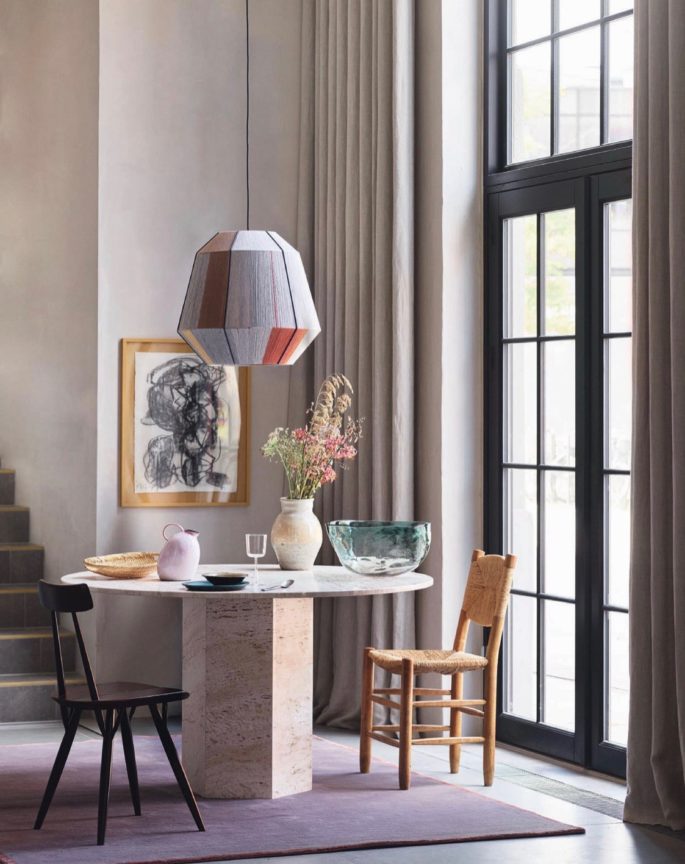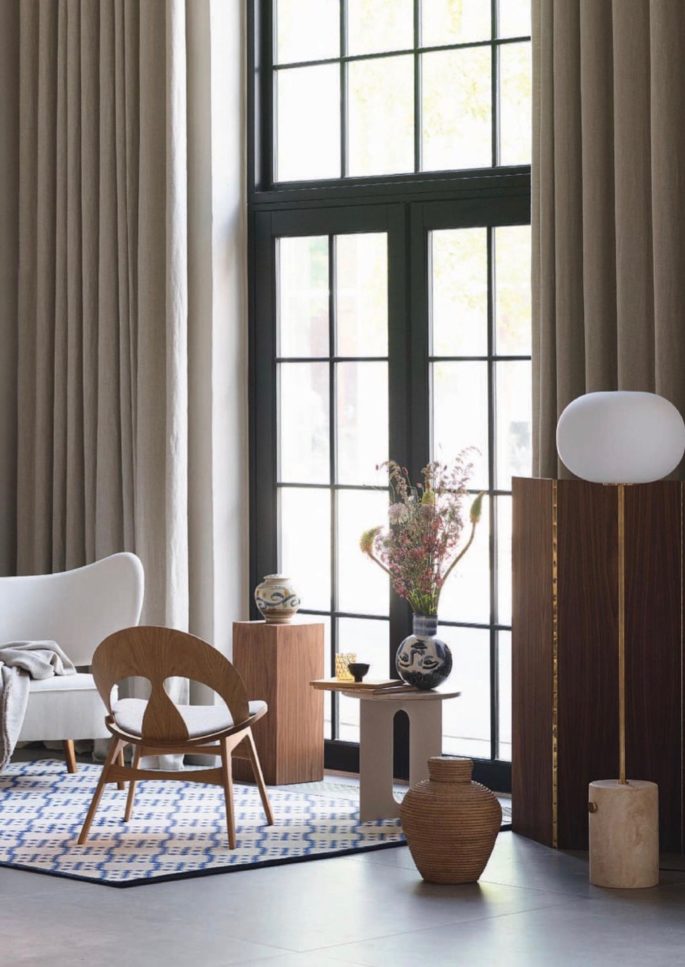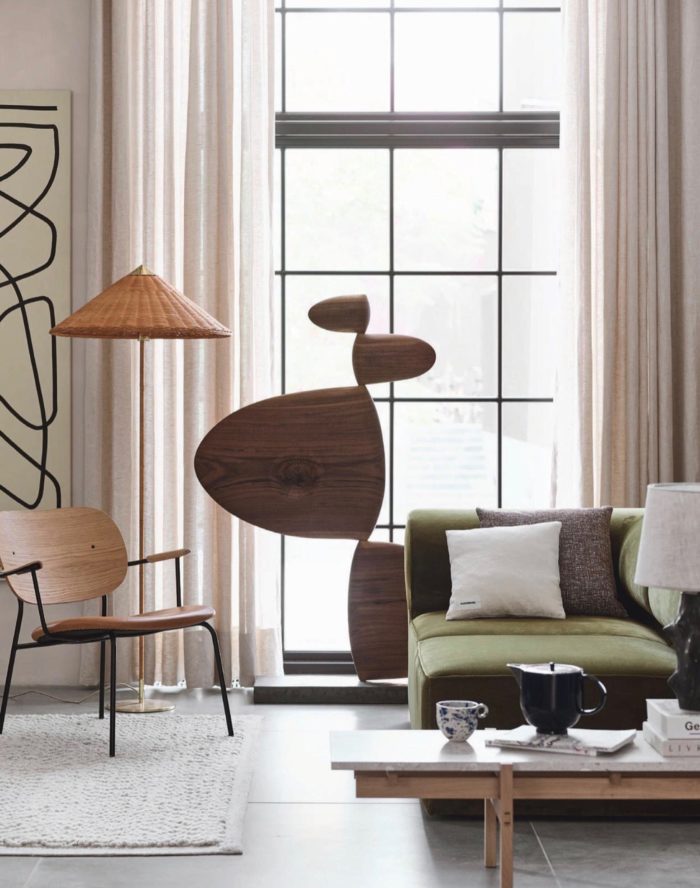At a time when it feels as though the world is falling apart, a return to mess, maximalism and comfort in our homes, might just be the way forward, says UK Elle Decoration in its March, 2020 issue.
The new year is a time for renewal, reappraisal, decluttering, purging, a domestic detox. Ridding your home of extraneous possessions has acquired a spiritual aspect, in that the shedding of material goods is deemed a mode of self-actualisation, and minimalism the only form of godliness we will allow. Read more, ‘You Might Have More House Than You Think.’
Our decluttering hysteria lurched into being around 2014 with the publication of Marie Kondo’s The Life Changing Magic of Tidying.
“Selling millions of copies in over 30 countries, Kondo’s manual gained her a place on Time Magazine’s Most Influential in the World in 2015. Where Ikea’s advertising campaign had urged people to ‘Chuck our their Chintz’, so Kondo encouraged us to chuck out almost everything, reducing their stash to stuff that ‘sparked joy’,” says UK Elle Decoration. Read more, ‘Clean and Clutter-Free in 15 Minutes a Day.’

At a time when it feels as though the world is falling apart, a return to collections and comfort in our homes, might just be the way forward. Image via UK Elle Decoration.
Kondo mania gripped the world at large. Acolytes reported a‘discarding high’, having to restrain themselves from lobbing out spouses and offspring. Meanwhile, charity shops reported a Kondo effect , reaching its apotheosis after her Netflix series launched in January 2019. Read more, ‘How to Design For Real Life.’
The new domestic asceticism felt like a reaction against the bling of the early 200s, a post-recessionary puritanism to atone for pre-recessionary excess.
However, this sanitised state of being was no less a signifier of stealth wealth – a bleached white life that spoke of privilege. People who could have it all and therefore wanted nothing. A kind of decadent austerity, requiring consummate capital to create it. Still, one of the era’s style edict is another’s gross platitude. At the start of a new decade in which we are facing the fallout from planetary crisis, the new minimalism is starting to look – well, old. In a world this bleak, what we crave is cheer, not self-abnegation: comfort blankets and squashy cushions. We’re not talking hygge – frankly, there’s only so much knitwear a sofa can take. However, happiness is not to be found in bleached wood floors and grey walls. Minimalism is too starck. Even millennials, famed for privilegers of experience over possessions, still require the odd succulent to foster self-care. Read more ‘Feeling Burnt Out? 5 Ways To Find Your Off Switch at Home.’
Even Kondo, is post-Kondo.
In the mother of all volte-faces, she’s taken to selling stuff – yes, stuff! In a shop. Last November, the decluttering guru has been flogging things such as $275 brass tool holders, $52 tea scoops and $24 crumb brushes in her online store, with a $12 pointy stick the object of particular mirth according to UK Elle Decoration’s latest March issue.
The increasing cross-pollination between fashion and interiors has seen ultra-maximalists such as Gucci’s Alessandro Michele joining stalwarts such as Missoni, Dolce & Gabbana and Versace in bringing lavish exoticism to our homes. Meanwhile Kate Moss has just redone her spare bedroom in a snakeskin-leopard print and bamboo extravaganza – a visual storm with its crisp, white bedsheets the only low-key aspect.

Without stuff we are nothing. Image via Elle Decoration UK
Colour and yes, even clutter, looks bewitching on Instagram but sometimes cloying in real life – too vibrant, too hoarder-y. Pained asceticism feels increasingly wrong and hotel-like – giving our abodes the cheerless quality of a dentist’s waiting room.
We do need to live more with less, as much to save our souls as to save the planet. Nevertheless, without stuff we are nothing.
The challenge it to a balance between minimalism and maximalism. Read more, ‘Melissa’s Ultimate Guide to Decorating.’ It’s a happy medium—halfway between the two—that feels close to “home.” A space that allows us room not merely to exist but to flourish. Pattern appearing in measured amounts, colours tend toward palatable pastels, traditionalism shows up in gracefully curved antiques covered with updated textiles or contemporary shapes clad in classic upholstery. Designers welcome idiosyncrasy but not to a chaotic degree. The look is resonating. There is a sense of nostalgia in these rooms, but you never feel like you have seen rooms exactly like these before. Like a good song, they are familiar but not predictable.
You might use paisley, stripes and lattice patterns, all potentially old-fashioned and, in combination, potentially maximalist. The effect, however, is calming and modern for two reasons. Restoring vintage seating with plain modern upholstery that tempers its fussiness. People and furniture makers are now veering toward softer more artful curves and classic English upholstery—tufted chairs and Chesterfield sofas—and mixing these pieces with super-modern light fixtures and graphic area rugs. This taste for the familiar extends to antique furniture that hasn’t been hip for half a century.
There’s nothing like a giddy assortment of pieces – newspapers, magazines, books, cushions, lacquered furniture, china, obelisks, porcelain prints, and lamps. They will make you happy. Read more, ‘How to Display Your Collections.’
Stuff can become your family and your love. A protective cocoon.
The enthusiasm for pretty cannot be understated. In these times, people are so happy to be amused. We’ve forgotten what pretty looks like. “I’m completely shattered,” said Dennis Harrington, the head of Sotheby’s English and European furniture department in New York following the recent auction of the legendary decorator, Mario Buatta’s belongings – 22 hours of bidding on 922 lots for $7.6 million. “I’m absolutely gobsmacked that people from all over the globe stayed up all day and all night to bid. And I’m amazed at how many buyers were private individuals. Clearly there’s a lot of people fed up with monochromatic interiors, with all this emphasis on hotel-like environments, and newly excited by Mario’s maximalist style.”
Mr. Harrington added that he didn’t think the prices were particularly inflated. “The estimates were very low, meant to be tempting, and we expected a bit of Mario bounce,” he said. “But I know of several disappointed decorators who were generally unsuccessful. They have been used to getting what they want, and it was like, ‘Where are all these people coming from?’”
Mr. Harrington was not the only one who thought the auction might signal a pendulum shift in interior design. “This sort of moment could change the direction of decorating after 20 years of relentless modernism,” said Mr. Drucker, the former editor.
Andrea Kavanagh, 42, was bidding from her home in Palm Beach, and won herself a dog painting. Her design blog, the Glam Pad, champions the sort of highly-festooned interiors favoured by Mr. Buatta. “For years the design magazines have been pushing modern, minimalistic style and the latest trends du jour,” she said. “Those of us who love traditional, classic style have felt unheard, but I feel like Instagram is changing that by bringing ‘old souls’ together from across the globe.


